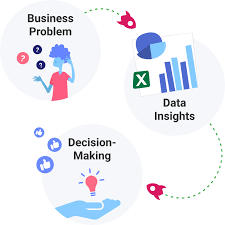Data-Driven Decision-Making
- BUILD Team
- Aug 27, 2024
- 3 min read

WHAT IS DATA-DRIVEN DECISION-MAKING?
In an industry rooted in historical practices and limited innovation the use of “intuition” has long been a key component of decision making. Although intuition remains extremely important, there is another tool at our disposal, and that is Data-Driven decision making. Within the last decade or so, the capability of big data has transcended many industries and now we are presented with more opportunities to innovate and improve efficiency, ultimately leading to lower costs and increased sales opportunities.
Data Driven decision-making has an impact on every department, from Sales teams optimizing volumes of particular products or locations, pricing, and scheduling to Operational teams utilizing data to track performance, measure changes, and optimize logistics. As the saying goes, “what can be measured can be managed”, and that is what the teams of Reed Family Companies are striving to achieve.
BENEFITS OF DATA-DRIVEN DECISION-MAKING
Ability to make more confident decisions - Data provides a logical and concrete foundation that gut instinct and intuition lack. By eliminating subjective elements from your business decisions, you can build confidence in yourself and your company. This confidence enables your organization to fully commit to a specific vision or strategy without excessive worry about making the wrong decision. However, a data-driven decision is not always correct. If the data collection process or interpretation is flawed, any decision based on that data will be inaccurate. Therefore, it is crucial to regularly measure and monitor the impact of every business decision.
Ability to become more proactive

With the ability to measure, record, and report accurate operational constraints, departments are able to accurately predict imbalances of products and plan ahead to minimize waste and creatively find solutions. Production teams can more accurately predict which products will be abundant and can be proactive in notifying their sales departments to promote or search out jobs that could utilize products in further markets or unique use case.
3. Ability to make cost saving decisions
When market conditions are competitive, the slimmest of margins can be the difference between making or losing a sale. The ability to identify cost-saving measures becomes extremely critical and is important to our goal of being a low-cost producer. Historic data coupled with better forecasting leads to better decision-making regarding where to invest capital and resources.
WHAT TOOLS ARE BEING USED BY REED FAMILY COMPANIES?

VSSE
Teams comprised of members from IT, Accounting, and Operations have worked on various tools to better understand and monitor the overhead that is involved in each process and product category. The SSRS Equipment Report is an automated report that collect various data points providing vision into locations of equipment, historic cost, and current utilization providing key information to determining accurate utilization rates for bidding and managing jobs.
George Reed Inc.
GRI in collaboration with Accounting and IT teams developed a SSRS Cost Per Ton Report that breaks down the mining and production process into simplified segments, thus providing better insight into what cost types are driving the most impact into a materials overall production cost. Through frequent review of this report, the GRI team is able to identify trends and cost spikes or drops and provides for a system to accurately measure changes in a process. This tool also provides better cost forecasting when budgeting for future work.
711 Materials Truck and Driver Analysis Tool, developed with a collaborative effort of accounting and IT teams, serves as a comprehensive resource for analyzing the operational and financial performance of our truck and driver across various locations. By providing detailed insights into payroll costs, operational metrics, and performance comparisons across various concrete plant locations, this tool enables data-driven decision-making. It highlights areas where costs can be optimized, identifies high-performing locations, and pinpoints underperforming areas that may need attention.
Comments